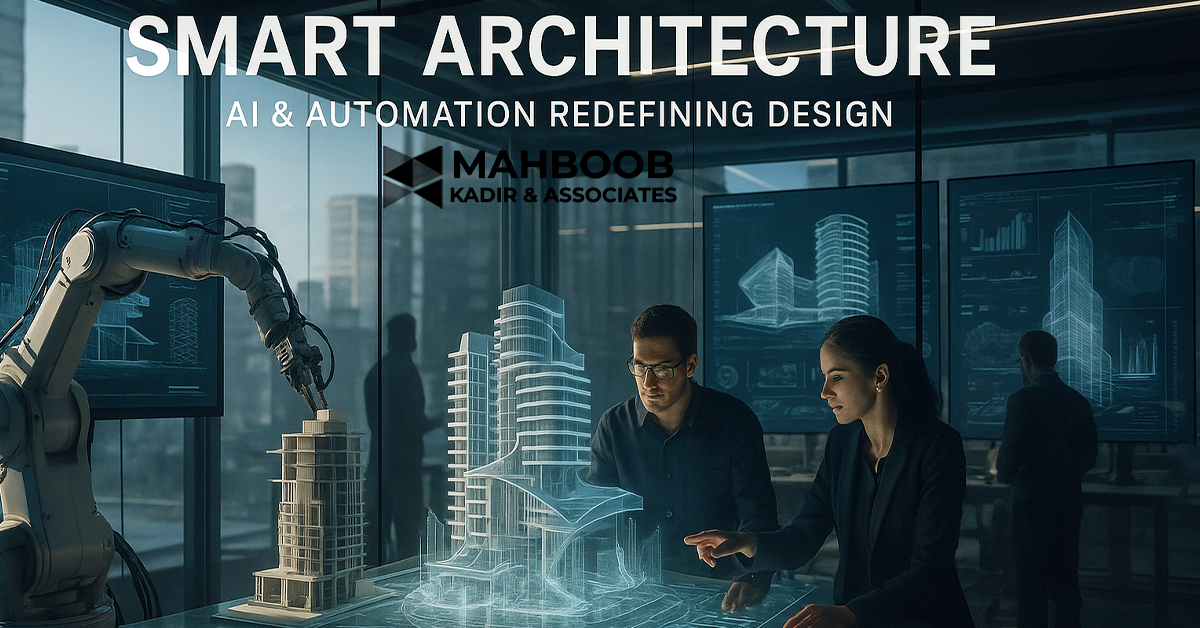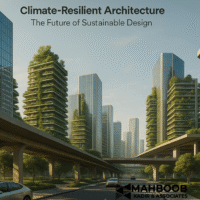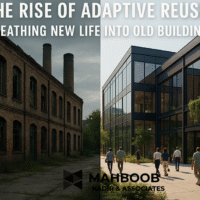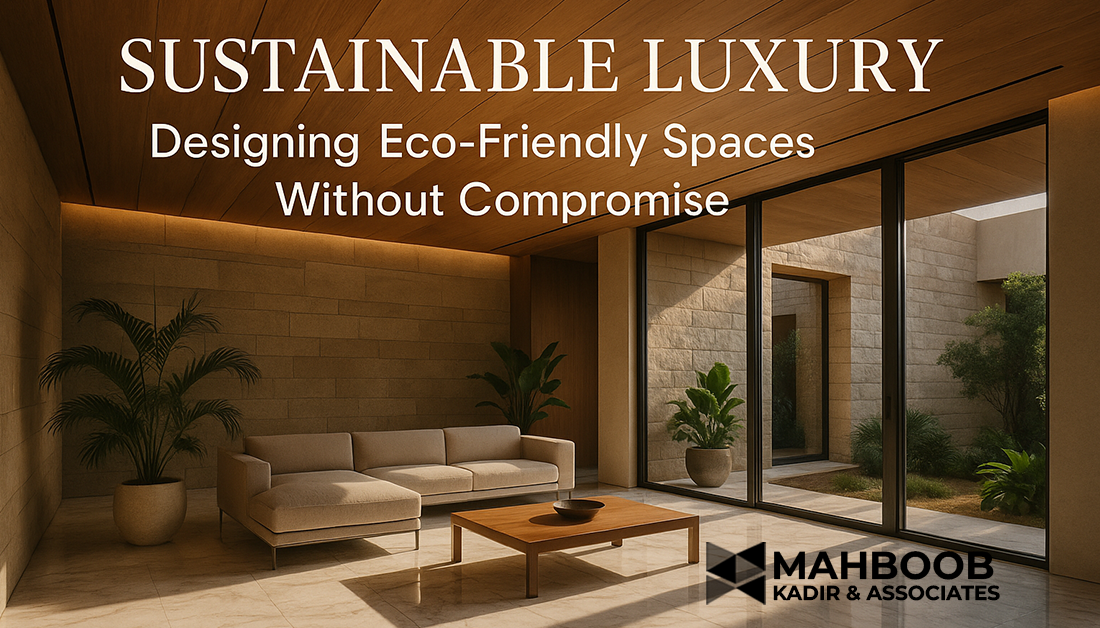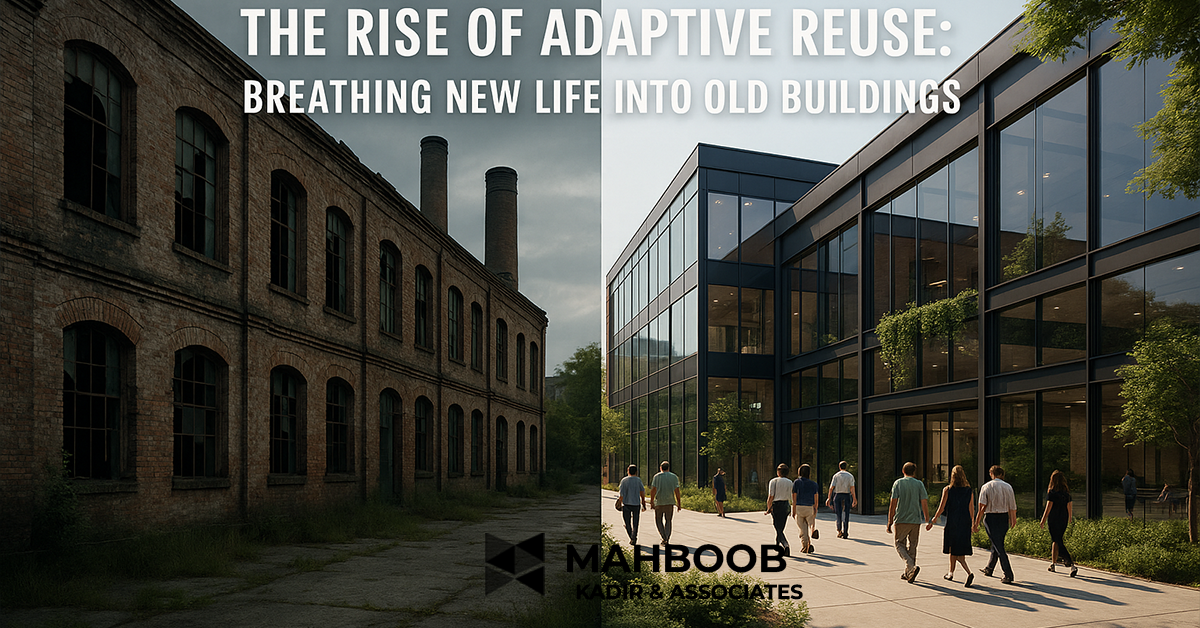The Future of Smart Architecture: AI, Automation, and Human-Centered Design
Architecture has always been about shaping the way we live — from the stone temples of the past to the glass towers of today. But as we step into 2025 and beyond, smart architecture is redefining how buildings are conceived, built, and experienced.
At the heart of this transformation lie three powerful forces: AI (Artificial Intelligence), automation, and human-centered design — a trio shaping the future of architecture in ways never seen before.
What Is Smart Architecture?
Smart architecture goes far beyond automated lighting systems or intelligent HVAC controls. It represents a holistic digital transformation in how spaces are designed, constructed, and used. It’s about making architecture responsive, data-driven, and empathetic to human needs.
Smart buildings in 2025 are capable of:
- Analyzing real-time energy use and occupancy patterns
- Adjusting climate and lighting automatically
- Learning user behaviors through AI systems
- Enhancing well-being and productivity through design feedback loops
From conceptual modeling to post-occupancy evaluation, AI in architecture is the new design assistant, strategist, and sustainability consultant all at once.
The Rise of AI in Architectural Design
Artificial Intelligence is revolutionizing the architectural workflow. Where architects once relied on sketches and intuition, they now leverage data models and predictive algorithms to make faster, smarter decisions.
Key Applications of AI in Architecture:
- Generative Design:
Using AI to automatically generate optimized building layouts based on site constraints, daylight, airflow, and cost parameters. - Predictive Maintenance:
Smart sensors and AI forecast when systems need maintenance, reducing downtime and cost. - Sustainability Simulation:
AI helps architects test environmental performance in real-time, from energy efficiency to thermal comfort. - Code Compliance & Automation:
AI tools now check design drawings for building code violations, saving hours of manual review.
In essence, AI in architecture bridges creativity and logic — allowing human imagination to flourish within data-driven precision.
Automation and Robotics in Construction
If AI is the brain, automation is the muscle behind the future of architecture.
From robotic bricklaying to 3D printing entire structures, automation is transforming construction speed, accuracy, and safety.
Modern Automation Examples:
- Robotic Construction: Autonomous drones and robots handle repetitive tasks like façade installation or material delivery.
- 3D Printing Buildings: On-site robotic printers now construct entire homes in 24 hours using sustainable materials.
- Digital Twins: Real-time 3D replicas of projects track construction progress and performance analytics.
These technologies make architecture automation not just futuristic, but practical — enabling faster, cheaper, and more precise development cycles.
Human-Centered Design in the Age of Technology
While technology drives efficiency, the soul of architecture remains human.
Human-centered design ensures that technology serves people — enhancing comfort, accessibility, and well-being.
Core Principles:
- Empathy in Design: Spaces are tailored to emotional and social needs.
- Adaptive Environments: Smart interiors respond to user preferences and health data.
- Biophilic Integration: Greenery and natural materials are digitally balanced for wellness and climate control.
- Accessibility for All: AI analyzes movement data to improve universal design access.
By blending AI and human-centered design, architects can create buildings that not only look intelligent but feel intuitive — environments that anticipate user needs and nurture wellbeing.
Data-Driven Architecture — The New Design Language
Today’s smart cities thrive on data as the new concrete.
Architects now use AI-powered analytics to understand how people move, work, and interact with their environments — feeding those insights into every design layer.
Key Components:
- Urban Data Modeling: Predicting pedestrian flows and traffic through AI simulations.
- Environmental Analytics: Real-time data for wind, sunlight, and heat mapping.
- User Feedback Loops: Post-occupancy sensors collecting behavioral data for continuous design evolution.
This data-driven design is shaping not just individual buildings but entire smart city ecosystems, where architecture and infrastructure evolve together.
Parametric and Generative AI in Architecture
Parametric and generative AI tools are at the forefront of smart architecture.
These systems analyze thousands of design options to create the most efficient, aesthetic, and sustainable solutions in minutes.
Benefits of Generative AI:
- Optimal land utilization for compact urban development
- Reduced design time with automated visualization
- AI-optimized structures with lower carbon footprints
- Integration with BIM for seamless construction execution
This evolution is redefining architectural innovation, merging creativity with computation.
Sustainability Through Smart Technology
Smart architecture doesn’t only mean digital — it also means sustainable.
AI helps architects plan buildings that consume fewer resources and actively contribute to the environment.
Technologies Leading the Way:
- Energy Monitoring Systems for real-time consumption analysis
- Smart Materials that react to temperature and humidity
- AI-driven Green Design Tools that recommend sustainable materials
- Automated Water Recycling Systems for eco-conscious construction
By merging sustainability and technology, architects can design truly future-ready smart buildings that adapt to both people and planet.
Smart Cities — The Bigger Picture
The ultimate manifestation of smart architecture is the smart city — a living network of intelligent buildings and infrastructure.
Key Elements of Smart Cities:
- Integrated AI systems managing utilities and transport
- IoT-based sensors for real-time environment monitoring
- Automated waste, energy, and traffic control systems
- Community-focused urban design for better livability
These cities are the next step toward human-centered urbanism, where sustainability, efficiency, and experience intersect seamlessly.
Challenges in Adopting Smart Architecture
Every innovation comes with challenges — and smart architecture is no exception.
Key Challenges:
- High upfront technology integration costs
- Data privacy and security concerns
- Skill gaps in AI-based architectural training
- Balancing automation with human creativity
The solution lies in collaborative evolution — architects, engineers, and policymakers working together to shape a balanced, responsible future of architecture.
The Next Decade — Where Smart Architecture Is Headed
The next decade will witness full AI integration into every stage of design and construction:
- Buildings will design and maintain themselves.
- Digital twins will predict user needs.
- Automated construction will reshape the urban skyline.
- Sustainability will be algorithmically optimized.
As AI and automation mature, architecture will no longer be static — it will be living, learning, and adaptive.
Frequently Asked Questions (FAQs)
Q1: What is smart architecture?
Smart architecture uses AI, automation, and data to design buildings that adapt to human needs and environmental changes.
Q2: How does AI help architects?
AI analyzes site data, generates optimized designs, simulates sustainability, and automates documentation — improving speed and accuracy.
Q3: Is smart architecture sustainable?
Yes, AI helps architects design energy-efficient, low-carbon buildings by simulating environmental performance and material impact.
Q4: What is the role of automation in architecture?
Automation accelerates construction, enhances safety, and enables precise prefabrication through robotics and digital manufacturing.
Q5: How can MK & Associates help?
MK & Associates integrates AI-driven design tools, sustainable strategies, and human-centered thinking to deliver architecture built for the next decade.
Designing Smarter, Living Better
The future of architecture is not just about taller towers or fancier façades — it’s about intelligence, empathy, and purpose.
By embracing AI in architecture, automation, and human-centered design, firms like MK & Associates are redefining how spaces respond to life itself.
Each design becomes more than just a structure — it becomes an adaptive ecosystem that evolves with its users, respects the planet, and pushes the boundaries of creativity.
Whether you’re planning a smart office, a next-generation mixed-use tower, or a climate-ready community —Partner with MK & Associates to design spaces that think, learn, and inspire.
www.mkandassociates.com


